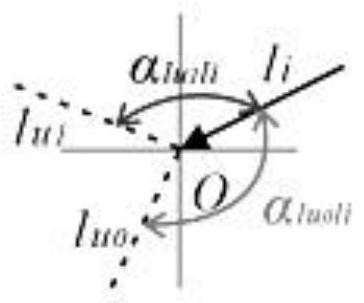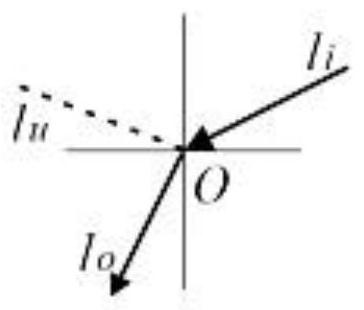An automatic reasoning method for the flow direction of waterway bridge tributaries based on conversion nodes
An automatic reasoning and waterway bridge technology, applied in the field of map synthesis, can solve problems such as the influence of accuracy, the difficulty of accurately describing the flow direction of rivers, and the difficulty in ensuring the accuracy of flow direction reasoning, so as to achieve the effect of accurate direction, good precision, and guarantee of subsequent transportation
- Summary
- Abstract
- Description
- Claims
- Application Information
AI Technical Summary
Problems solved by technology
Method used
Image
Examples
Embodiment 1
[0042] See attached figure 1 As shown, Embodiment 1 of the present invention discloses an automatic reasoning method for the flow direction of waterway bridge tributaries based on conversion nodes, including:
[0043] S10: Select a mainstream as the starting reference, identify the first-order adjacent tributary of the mainstream, and determine the flow direction of the first-order adjacent tributary according to the first conversion node of the first-order adjacent tributary. The first conversion node is the connection between the first-order adjacent tributary and the mainstream Node;
[0044]S20: Transmit the flow direction of the tributary to the second conversion node of the first-order adjacent tributary, and use the flow direction of the tributary as the global flow direction of the second conversion node, and calculate the flow direction of each river section associated with the second conversion node according to the global method, the second The conversion node is t...
Embodiment 2
[0082] Verify the method provided by Embodiment 1 of the present invention, the specific process is as follows:
[0083] 1. Experimental data and experimental environment
[0084] Relying on the WJ-III map workstation developed by the Chinese Academy of Surveying and Mapping Sciences, the automatic reasoning method for the flow direction of waterway bridges and tributaries based on the conversion nodes proposed by the present invention is embedded, and compared with the method proposed by Schwenk (2020) (hereinafter referred to as the Schwenk method) , to verify the rationality and effectiveness of the present invention. The test data are selected from the 1:10000 geographic national conditions census water system data in Yunyang County, Hubei Province, with a spatial range of 104×85km 2 , including 12 river systems and 2035 river sections, see the attached Figure 5As shown, where RN stands for RiverNetwork. The experimental environment is a single PC equipped with Windows...
PUM
 Login to View More
Login to View More Abstract
Description
Claims
Application Information
 Login to View More
Login to View More - R&D
- Intellectual Property
- Life Sciences
- Materials
- Tech Scout
- Unparalleled Data Quality
- Higher Quality Content
- 60% Fewer Hallucinations
Browse by: Latest US Patents, China's latest patents, Technical Efficacy Thesaurus, Application Domain, Technology Topic, Popular Technical Reports.
© 2025 PatSnap. All rights reserved.Legal|Privacy policy|Modern Slavery Act Transparency Statement|Sitemap|About US| Contact US: help@patsnap.com



